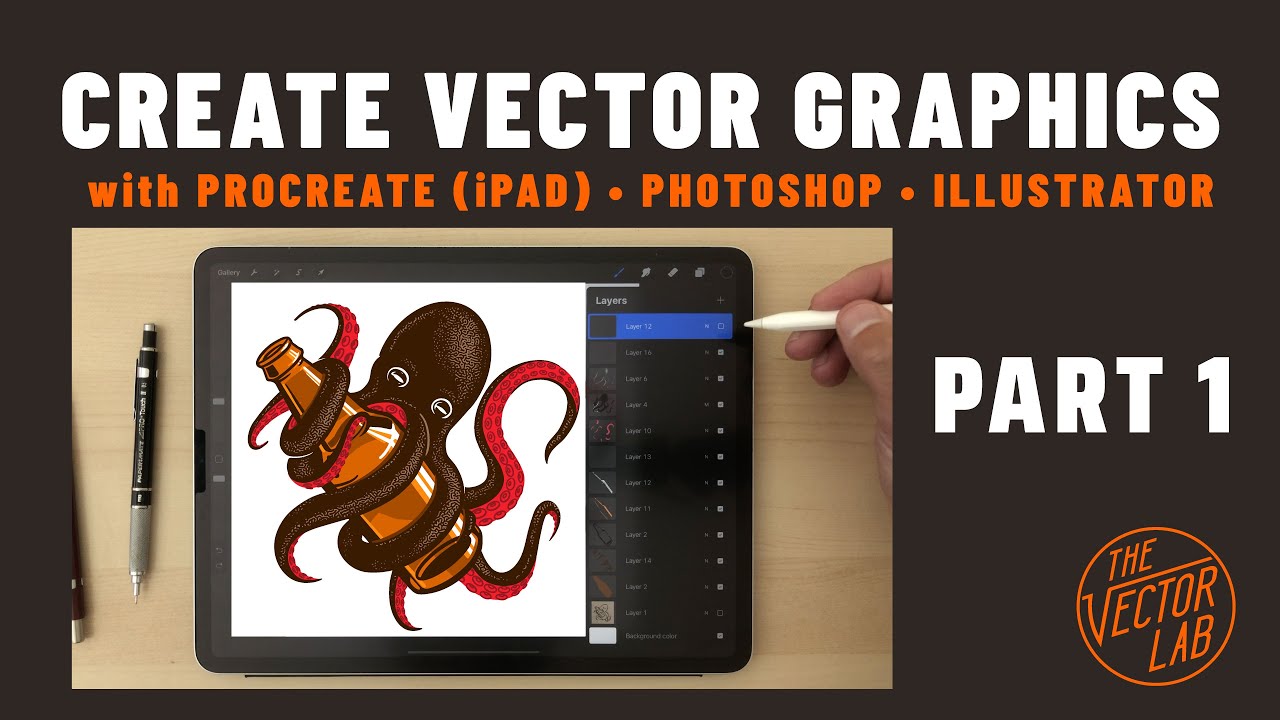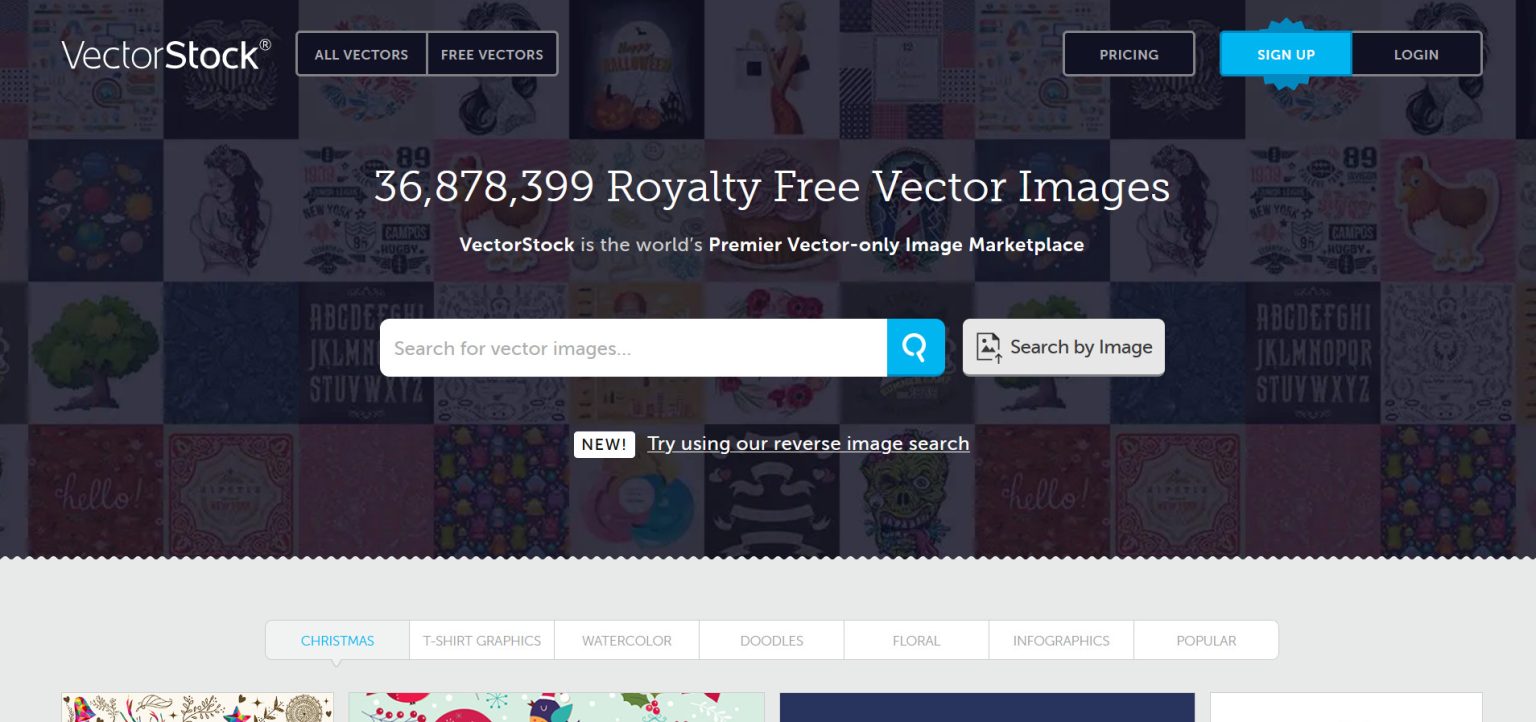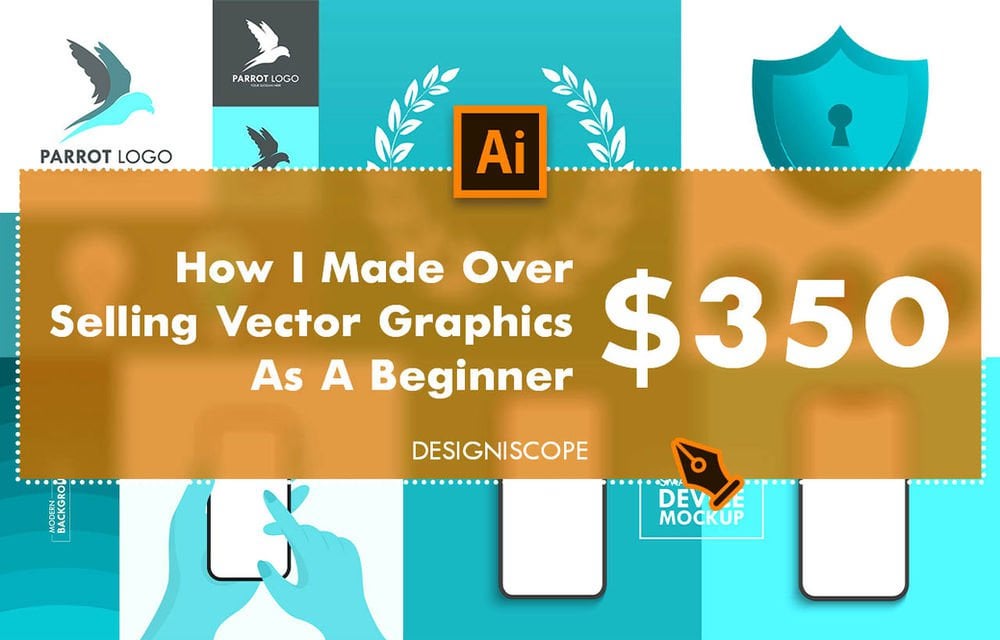Welcome to the world of vector graphics! Have you ever found yourself frustrated with poor-quality images for your print projects? Look no further than VectorStock, a treasure trove of high-quality, scalable graphics that can elevate your designs. Whether you're creating posters, flyers, or business cards, understanding how to leverage VectorStock graphics can make a significant difference in your print-ready designs. Let’s dive into what
Benefits of Using Vector Graphics for Print Designs

Using vector graphics for your print designs comes with a multitude of benefits. Here are some of the key advantages:
- Scalability: Unlike raster images, which can pixelate when resized, vector graphics are created using mathematical equations, allowing them to be scaled to any size without losing quality. This means your designs will look sharp and professional, whether they're printed on a business card or a billboard.
- Editability: Vector graphics are easily editable. You can change colors, shapes, and sizes without any hassle. For example, if you want to adjust the color of an element in your design, it’s as simple as selecting it and choosing a new hue.
- Smaller File Sizes: Vector files are generally smaller than raster files, making them easier to store and share. This is especially useful when working on larger projects where multiple assets are involved.
- Infinite Possibilities: The creativity of vector graphics is virtually limitless. Artists can create intricate designs, logos, and patterns that can be easily replicated without losing detail. This versatility allows for unique branding opportunities.
- Print Quality: Since vector graphics are resolution-independent, they ensure high-quality prints every time. Whether it’s for brochures or high-end magazines, you can count on crisp edges and vibrant colors.
In conclusion, using VectorStock graphics in your print-ready designs not only enhances the quality but also simplifies the design process. With their scalability, editability, and superior print quality, vector graphics are a must-have tool in every designer's arsenal. So, next time you're working on a print project, consider reaching for vector graphics to take your work to the next level!
Also Read This: Why Designers Are Falling in Love with VectorStock’s Stunning Artwork
3. Getting Started with VectorStock

So, you’re ready to dive into the world of vector graphics, and VectorStock is your chosen platform. Great choice! Let’s walk through the steps to get you started.
First, you'll need an account. Head over to the VectorStock website and click on the “Sign Up” button. You can choose between a free account or various subscription plans, depending on how often you plan to use the service. If you’re just experimenting, the free account might be ideal to start with.
Once you're signed up, take a moment to familiarize yourself with the dashboard. Here are a few features you should check out:
- Search Bar: Easily find graphics using keywords related to your project.
- Categories: Browse through different categories like icons, backgrounds, and illustrations.
- Your Library: Save your favorite graphics for easy access later.
After setting up your account, it’s time to explore. VectorStock offers millions of graphics, so you’ll want to narrow down your options. Think about your project’s style and audience. Are you looking for something whimsical, professional, or modern? This will guide your search.
When you find a graphic that catches your eye, click on it to see the details. Here, you'll find various file formats available for download, as well as information on licensing. It's crucial to choose the right format for your design software. For print-ready designs, you’ll typically want to download the file in EPS or SVG formats to ensure the highest quality.
Lastly, don’t hesitate to utilize the VectorStock community. Join forums or check their blog for tips on design best practices and trends. Engaging with other designers can provide insights that will enhance your creativity and technical skills!
Also Read This: Is It Possible to Access VectorStock for Free? Exploring Free Options
4. Finding the Right Graphics on VectorStock

Now that you're set up with VectorStock, the next big task is finding the perfect graphics for your print-ready designs. This can seem overwhelming at first, but there are some strategies to make your search efficient and effective!
First, start with the search bar. Enter specific keywords related to your project. For instance, if you’re designing a flyer for a bakery, try keywords like “bakery,” “bread,” or “desserts.” The more specific you are, the better the results.
After entering your keywords, take advantage of the filters provided by VectorStock. You can sort results by:
- Popularity: See what’s trending and what other designers are using.
- Newest: Find the latest graphics added to the site.
- Price: Filter results to view free options or select specific price ranges.
If you’re still not finding what you need, try adjusting your keywords. Sometimes, a slight change can yield vastly different results. For example, if “desserts” isn’t working, switch to “pastries” or “sweets.”
Another fantastic feature is the categories section. Navigate through different categories to discover hidden gems you might not have thought to search for. This is especially useful for brainstorming ideas or finding inspiration for your design.
Once you’ve found a graphic that fits your vision, be sure to check the licensing options. Understanding how you can use the graphic is essential, especially for commercial projects. If you’re unsure, VectorStock often provides detailed explanations of their licensing terms.
Finally, don’t forget to leverage your personal library. Save anything that catches your eye so you can revisit and compare options later. This feature can save you time and help keep your design organized.
With these tips in mind, you’ll be well on your way to finding the perfect graphics on VectorStock for your print-ready designs!
Also Read This: A Step-by-Step Guide to Designing Infographics with VectorStock
5. Customizing Vector Graphics for Your Projects
When it comes to design, customization is key. Vector graphics offer unparalleled flexibility, allowing you to manipulate every element to suit your unique vision. Whether you're working on a logo, poster, or any print material, tailoring these graphics can elevate your project to new heights.
Start with the Basics: Before diving into intricate changes, familiarize yourself with the vector file format. Programs like Adobe Illustrator, CorelDRAW, or even free software like Inkscape can help you edit these graphics. Once you're comfortable, consider the following methods to customize:
- Color Adjustments: Change colors to match your brand palette. Use the color picker or swatches to experiment with hues, saturation, and brightness.
- Scaling and Resizing: Resize elements without losing quality. This is particularly useful for adjusting logos or icons to fit various dimensions.
- Adding Text: Incorporate typography that aligns with your message. Mix and match fonts to create a stylish yet readable design.
- Combining Elements: Don't hesitate to mix different vector graphics. Combine shapes, icons, and illustrations to create a cohesive design.
- Modifying Shapes: Use the pen tool to reshape or add additional points to graphics, giving you the freedom to create entirely new forms.
As you customize, keep in mind the overall balance of your design. It’s easy to get carried away with vibrant colors or complex shapes, but simplicity often resonates more with viewers. Use whitespace effectively to enhance readability and draw attention to key elements.
Lastly, don’t forget to save your work frequently and in multiple formats. This not only ensures you have backups but also allows you to export versions suited for both digital and print uses.
Also Read This: Resizing VectorStock Graphics Without Losing Quality
6. Preparing Your Designs for Print
After customizing your vector graphics, it’s time to prepare them for print. This step is crucial because print design has different requirements compared to digital formats. Follow these guidelines to ensure your project looks stunning on paper.
Resolution Matters: While vectors are resolution-independent, the raster images you may incorporate into your design should be high resolution (at least 300 DPI). This ensures that your prints are sharp and clear.
Color Mode: Always switch your color mode from RGB to CMYK before finalizing your design. RGB colors are vibrant on screens but can appear dull when printed. CMYK is designed for printing, ensuring that your colors come out just as you envisioned.
- Proofing: Consider printing a small proof before going for a full print run. This allows you to check colors, sizes, and overall layout.
- Bleeds and Margins: Add a bleed area (typically 1/8 inch) around your design. This prevents any white edges from appearing once trimmed. Ensure your important elements stay within a safe margin.
File Format: Save your final design in a print-friendly format, such as PDF, EPS, or TIFF. These formats maintain quality and are widely accepted by printing services.
Finally, when selecting a printing service, communicate your needs clearly. Ask for recommendations on paper types, finishes, and any special requirements that may enhance the final product.
By following these preparation steps, you can feel confident that your designs will translate beautifully from screen to print, making a lasting impression on your audience.
Also Read This: The Top Fall-Themed Graphics on VectorStock for Seasonal Campaigns
7. Tips for Ensuring Quality in Print-Ready Designs
Creating print-ready designs using VectorStock graphics can be a fulfilling experience, but it’s essential to ensure the quality of your final product. Here are some practical tips to keep your designs looking sharp and professional:
- Check Your Resolution: Always make sure your vector graphics are set to the correct resolution for print. Ideally, you should aim for 300 DPI (dots per inch) to ensure crisp images.
- Use CMYK Color Mode: When preparing your design, switch to CMYK color mode. This mode is specifically designed for printing and will give you a better sense of how colors will look on paper.
- Keep Text Editable: Convert text to outlines only if necessary. Keeping text editable allows you to make last-minute changes without disturbing your layout.
- Check for Bleeds: If your design extends to the edge of the paper, make sure to include bleeds (usually 0.125 inches). This prevents white edges from appearing after trimming.
- Proof Your Design: Always print a test copy before the final print run. This allows you to catch any errors or inconsistencies that might have slipped through.
- Use High-Quality Images: While vector graphics are resolution independent, any raster images used should be high quality. Avoid images that are pixelated or blurry.
- Consult with Your Printer: Always communicate with your printing service. They can provide guidelines and specifications that are crucial for ensuring your design prints perfectly.
By following these tips, you're not just ensuring that your design looks great on-screen but also that it translates beautifully to print. It’s all about attention to detail and a bit of preparation!
8. Conclusion and Next Steps
Using VectorStock graphics for print-ready design creation opens up a world of possibilities. You have access to a vast library of resources that can elevate your projects and make your designs stand out. As you wrap up your journey into the world of vector graphics, here are some next steps to consider:
- Explore More Graphics: Dive deeper into VectorStock’s collection. Experiment with different styles and themes that resonate with your brand or project.
- Refine Your Skills: Take online courses or tutorials focused on print design and graphic software to further enhance your skills. Websites like Skillshare or Udemy have great resources.
- Build a Portfolio: Start compiling your best print designs into a portfolio. This will not only showcase your skills but also help attract clients or opportunities.
- Network with Other Designers: Join forums or groups dedicated to graphic design. Engaging with a community can provide support and inspiration.
- Stay Updated: Design trends evolve quickly. Follow design blogs or subscribe to newsletters to stay current with the latest trends and tools.
In conclusion, leveraging VectorStock graphics for your print designs can be a game-changer. By adhering to quality practices and continuously improving your skills, you’ll create stunning, print-ready designs that captivate your audience. So, dive in, experiment, and let your creativity flow!
 admin
admin








